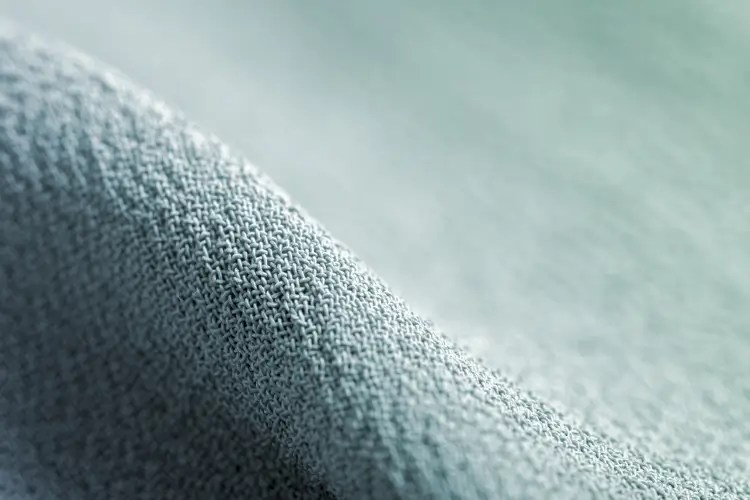Textiles are used in a variety of applications, from clothing to furniture, and it is important to ensure that they meet safety standards. One aspect of safety testing is flammability testing, which measures the ability of a material to resist burning. In this blog post, we will discuss the key considerations and best practices for flammability testing of textiles.

Introduction
Flammability testing is a critical part of product safety evaluation, especially for textiles, which can easily catch fire and spread flames quickly. Textile products can be found in homes, workplaces, and public spaces, making it important to ensure that they are safe for use. Flammability testing involves exposing the textile sample to a flame and measuring its reaction to determine its flammability characteristics. It is important to understand the various factors that can affect the results of the flammability tests and the best practices to follow for accurate testing. You can test the material flammability from a Flammability test lab.
Key Considerations for Flammability Testing of Textiles
Testing Standards
The first consideration when it comes to flammability testing is the standard that should be used. There are different testing standards available, depending on the application of the textile product. Some of the commonly used standards include:
- ASTM D1230: Standard Test Method for Flammability of Apparel Textiles
- ASTM D4151: Standard Test Method for Flammability of Blankets
- NFPA 701: Standard Methods of Fire Tests for Flame Propagation of Textiles and Films
It is important to use the appropriate standard for the specific textile product being tested to ensure accurate results.
Sample Selection
Another important consideration for flammability testing is the selection of the textile sample. The sample should be representative of the product being tested and should be large enough to provide a reliable result. The sample should also be conditioned before testing to ensure that it is at the appropriate moisture content.
Ignition Source
The ignition source used for flammability testing can affect the results. The type of ignition source used should be appropriate for the textile product being tested. For example, a cigarette lighter may be appropriate for testing clothing, while a larger ignition source may be needed for testing upholstery.
Test Environment
The environment in which the flammability test is conducted can also affect the results. The test environment should be controlled and standardized to ensure consistent results. Factors such as temperature, humidity, and air flow should be monitored and controlled during testing.
Best Practices for Flammability Testing of Textiles
Proper Instrument Calibration
One of the best practices for flammability testing is to ensure that the testing instrument is properly calibrated. Calibration ensures that the testing instrument is providing accurate and reliable results. It is important to calibrate the instrument regularly and to follow the manufacturer’s instructions for calibration.
Testing Equipment Maintenance
Another best practice for flammability testing is to ensure that the testing equipment is properly maintained. Regular maintenance of the testing equipment can help to ensure that it is operating correctly and providing accurate results. Maintenance should include regular cleaning and inspection of the equipment.
Record Keeping
Record keeping is an important best practice for flammability testing. Keeping detailed records of the testing process, including sample selection, testing conditions, and results, can help to ensure that the testing process is repeatable and reliable. It can also help to identify any issues with the testing process.
Quality Control Procedures
Implementing quality control procedures is another best practice for flammability testing. Quality control procedures can help to ensure that the testing process is consistent and reliable. This can include using control samples and regularly testing them to ensure that the results are consistent.
FAQs
Why is flammability testing important for textiles?
Flammability testing is important for textiles because it ensures that the product is safe for use. Textile products can easily catch fire and spread flames quickly, which can result in injury or even death. Flammability testing measures the ability of a material to resist burning, and ensures that the product meets safety standards. By conducting flammability testing, manufacturers can ensure that their products are safe for use in various applications, including clothing, bedding, furniture, and more.
What are the consequences of failing flammability testing for textiles?
Failing flammability testing can have serious consequences for manufacturers. If a textile product fails flammability testing, it may not be allowed to be sold or used in certain applications. This can result in lost sales and revenue, as well as damage to the company’s reputation. Failing flammability testing can also result in legal consequences if the product causes injury or damage due to its flammability characteristics.
What types of textiles require flammability testing?
Most textiles that are used in clothing, bedding, and furniture applications require flammability testing. This includes fabrics, yarns, and other materials that are used in the manufacturing of these products. The specific testing standards and requirements may vary depending on the application and the intended use of the product.
What is a Flammability Chamber?
A flammability chamber is an enclosed space designed to simulate the conditions in which a material may ignite or burn. The flame chamber consists of a rectangular box with a lid, which is sealed to prevent the escape of gases and smoke. The interior of the chamber is fitted with various components, including a burner, temperature and pressure sensors, and ventilation systems. These components allow for precise control of the testing environment, and the ability to measure various parameters such as temperature, flame spread, and smoke density.
Conclusion
Flammability testing is an important part of product safety evaluation, especially for textiles. By understanding the key considerations and best practices for flammability testing of textiles, manufacturers can ensure that their products are safe for use in various applications. It is important to use the appropriate testing standard, select the appropriate sample, use the appropriate ignition source, and control the testing environment to ensure accurate results. Following best practices such as proper instrument calibration, equipment maintenance, record keeping, and quality control procedures can also help to ensure that the testing process is consistent and reliable.

